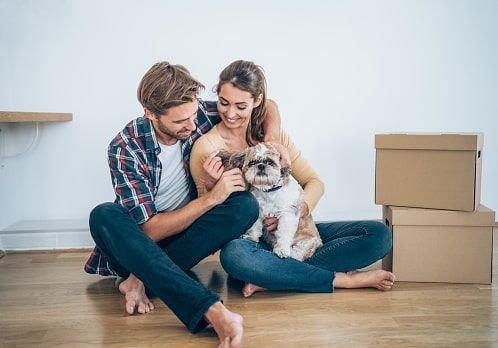With their bright eyes, bushy tails and absolutely gorgeous personalities, dogs make for the ideal companion for families and people living on their own alike and whether you have always wanted a dog of your very own, or else are simply considering a new furry addition to the family, then continue reading.
Here is a thorough guide to owning a dog for the first time, packed with everything you absolutely have to know before moving forward.
Choosing the Right Breed to Suit Your Lifestyle
Contrary to what many people think, you are perfectly able to arrive at a rescue center with a shortlist of dog breeds that you would prefer and moreover, there are always a heartbreaking number of puppies also wanting new homes there too.
Even though the nature and behavior of a dog are much more influenced by how they are treated and trained, there are certain instinctual behaviors, which are clearly associated and connected with different breeds.
The following connections are fairly accepted as the right choice when looking for a new dog to bring into your heart and your life:
- Jack Russell Terriers, Westies & Border Terriers are all fantastic with children
- Whippets and Greyhounds are renowned for forming deep bonds with their owners
- Cocker Spaniels and Springer Spaniels are ideal for people with active lifestyles
- Boxers and Rottweilers are great protectors and are incredibly loyal
- Cavalier King Charles Spaniels are happy lap dogs, which is ideal for older people
Another important thing to consider when choosing the right breed of dog for you and your lifestyle is that, depending on the specific breed, this can greatly affect medical bills and other costs. Even though this is by no means a hard and fast rule, crossbreeds, otherwise known as mongrels, tend to have considerably stronger constitutions and, therefore, generally need less medical attention overall.
Preparing for Your New Furry Arrival
Along with the excitement of bringing your new dog home, you will need to prepare your home, as well as their own personal sleeping and resting areas, ahead of the new arrival.
Go through the entire use for potential hazards, such as loose and exposed electrical wires and cords, order quality and healthy raw dog food to be delivered periodically and invest in soft, dog-safe chew toys and snuggly blankets.
In addition, you should invest in a training lead, puppy pads for the kitchen floor (if appropriate), an abundance of doggy bags, a collar with an adjustable fastening to accommodate for weight loss or gain in the first few weeks and a comfortable, oversized dog bed.
The First Day & Night
When it comes to the first day, from the minute you bring your new dog home and that evening, your dog is likely, depending on their personality, to be slightly discombobulated and wonder what is happening.
Now, if you are absolutely sure that you want to commit to having your dog sleep in your bedroom, this is entirely acceptable and will certainly serve to strengthen the bond and connection between you both. However, you should still keep your dog’s bed at the side of your own and encourage them to sleep in their own bed, at least for the beginning part of the night.
Additionally, you need to ensure that you are fully aware of everything your dog was eating prior to coming to their forever home, as severe changes in diet can result in tummy upset. As a rule, it is strongly advisable to order simple, plain raw food and keep enough in for at least a week.
Physical Exercise
You must never consider getting a dog unless you or another member of your household are not present in the home for most of the day and, moreover, unless at least one of you has the time to take your new dog on two good walks each and every day, come rain or shine.
When training, keep your dog on a lead and ensure that you are walking them in an area whereby dogs are not only allowed but actively encouraged, away from the road and with plenty of doggie-poop bins provided on the walk.
Emotional Stimulation
Just as important as ensuring your dog is physically stimulated and exercised sufficiently each and every day and in the case of older dogs, arguably even more important, is that of emotional exercise and stimulation.
Luckily, there is a myriad of ways to provide substantial, exciting, emotional stimulation for your new dog and this is also the perfect way to bond and connect with your new best friend:
- Invest in a canine-safe puzzle toy
- Have your new dog work for their treats
- Teach your dog a couple of new tricks
- Once trained, let them explore off the lead on walks
- Create a knowing and verbal bond with them
Important Things to Know
In addition to the important points discussed in detail earlier in this article, there are other, just as pertinent things to note before you go ahead and bring your new dog home.
Beforehand, you should spend time asking friends and neighbors for recommendations for a local veterinary practice that fully catersto dogs and, furthermore, remember to fully register your new dog with them. Hopefully, there will be no pressing need to take them to the vet, but it is essential to have this safeguard in place.
If you have admirably decided to rescue a beautiful and deserving dog from your local animal shelter, then presumably, they will have been taught at least the basic training commands, such as sit and stay. However, you should still reinforce such training and moreover, instill your own rules as to what you expect from your dog. Never, under any circumstances, shout at your dog or strike them and instead use positive reinforcement to make your dog understand what you want.
Finally, enjoy the experience of watching your dog flourish and thrive in their new forever home and build a strong, ever-lasting connection with your new best friend.




